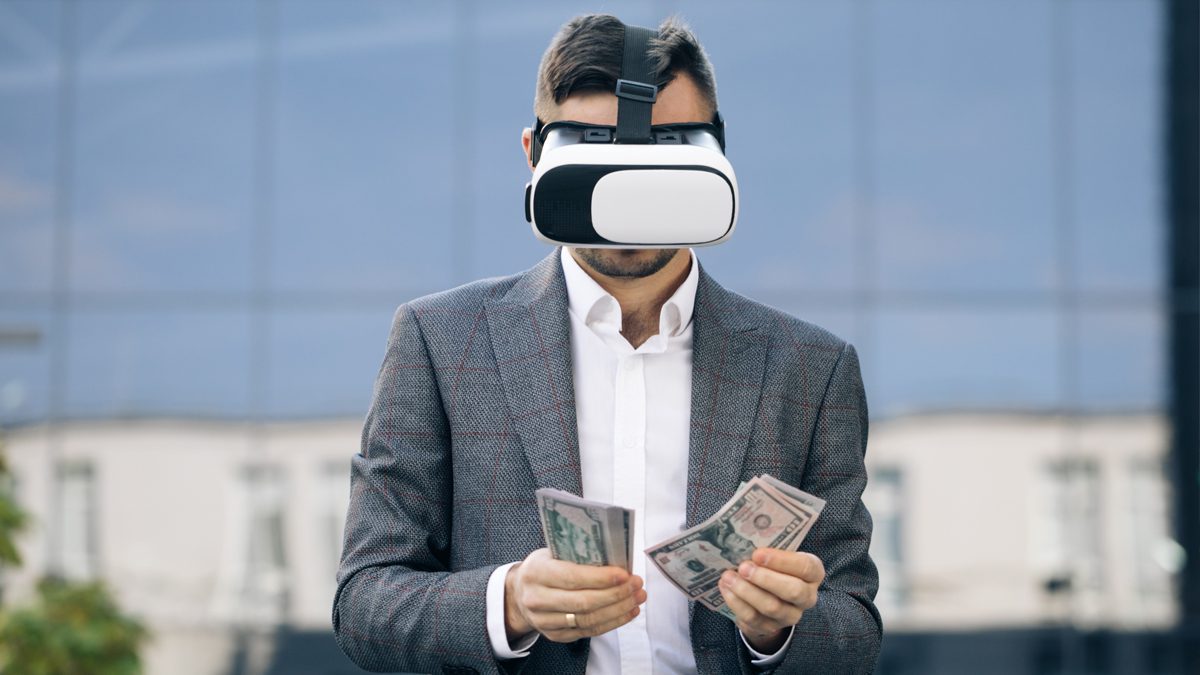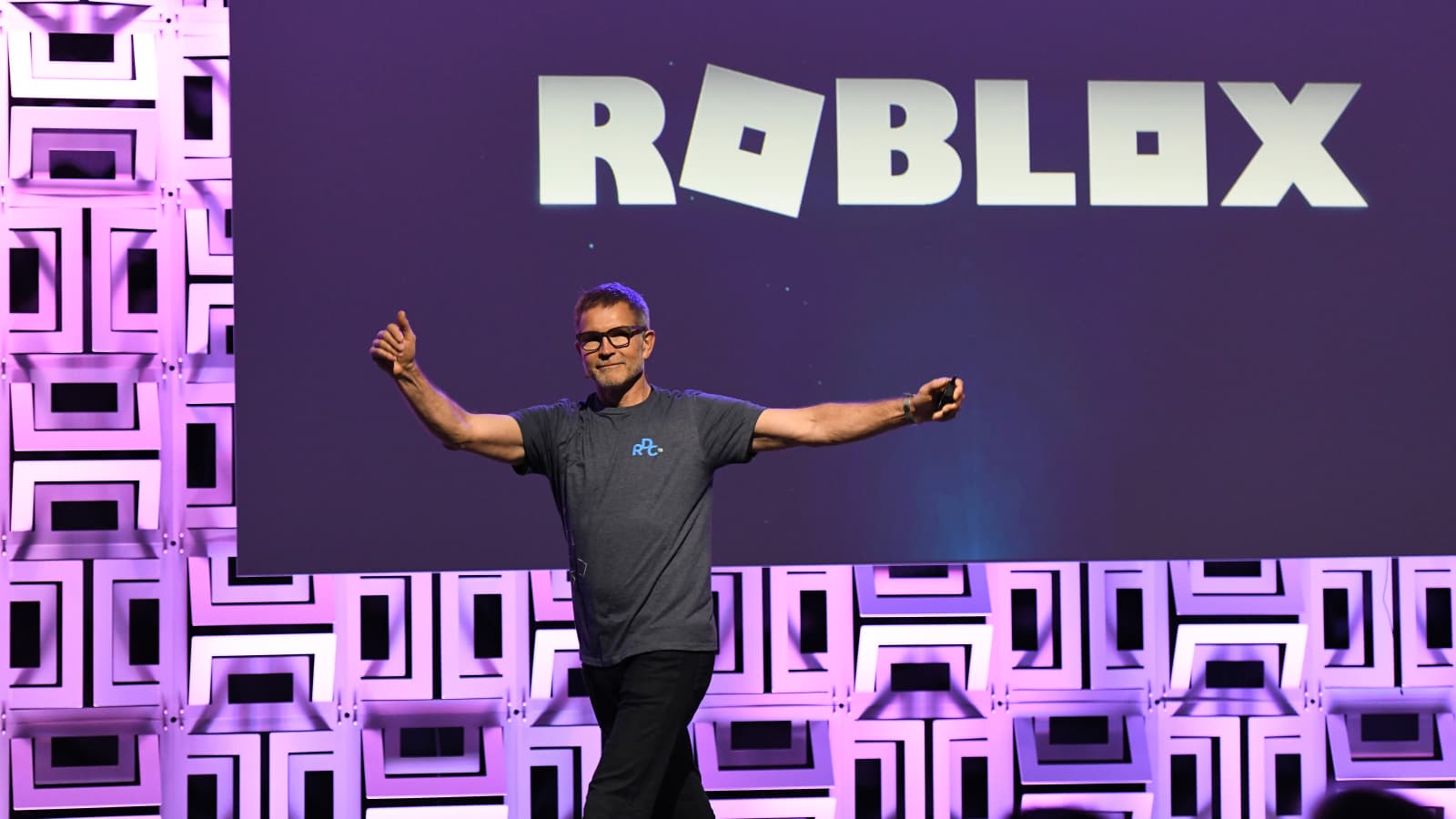Introduction
Virtual Reality (VR) has emerged as one of the most exciting and rapidly growing fields in recent years, revolutionizing industries such as gaming, entertainment, healthcare, and education. With its immersive and interactive capabilities, VR has captured the attention of both consumers and businesses, creating a high demand for skilled professionals in this field.
But what is the average salary of someone working in virtual reality? The answer to this question is not straightforward, as VR encompasses a wide range of job titles and roles, each with its own salary range. Factors such as industry, location, experience level, and specific skills also play a significant role in determining VR salaries.
In this article, we will explore the various aspects that influence the average salary of someone in virtual reality. We will delve into the job titles and roles within the VR industry, examine salary ranges across different industries and geographic locations, and explore the differences in salaries based on experience levels. Additionally, we will compare the salaries of VR developers and VR designers, discuss the necessary skills and qualifications for a lucrative VR career, and analyze the trends impacting VR salaries.
Whether you’re a VR enthusiast considering a career in this field or an employer looking to hire VR professionals, understanding the average salaries in virtual reality is crucial for making informed decisions. By the end of this article, you will have a comprehensive understanding of the factors that contribute to VR salaries and the opportunities available in this dynamic industry.
Understanding Virtual Reality
Virtual Reality (VR) refers to the use of computer technology to create a simulated environment that can be experienced and interacted with by users. It involves the use of specialized headsets or goggles that provide a 360-degree view and tracking of the user’s movements, creating a sense of presence and immersion in a virtual world.
The key components of virtual reality include the VR headset, which typically features high-resolution displays and sensors to track head movements, and hand controllers or body suits for more immersive interactions. In addition to visual and auditory stimulation, VR can also incorporate other senses, such as touch and smell, through the use of haptic feedback devices.
Virtual reality has gained significant popularity due to its ability to transport users to new and captivating experiences. It has found applications in diverse industries, including gaming, entertainment, education, training, healthcare, architecture, and engineering.
In the gaming industry, VR allows players to step into virtual worlds, providing a more immersive and realistic gaming experience. In education and training, VR can simulate real-world scenarios, allowing students and professionals to practice and gain valuable skills in a safe and controlled environment. In healthcare, VR is used for pain management, mental health therapy, surgical simulations, and rehabilitation exercises.
The immersive nature of VR offers countless possibilities for innovation and advancement. As technology continues to improve, we can expect virtual reality to become even more realistic, interactive, and accessible to a broader audience.
Understanding the fundamentals of virtual reality is essential for professionals in this field. Whether you are a VR developer, designer, or content creator, having a strong grasp of the core concepts and emerging trends will enable you to create engaging and impactful VR experiences.
The Growing Demand for VR Professionals
The field of virtual reality has experienced exponential growth in recent years, resulting in an increased demand for skilled professionals who can drive innovation and create compelling VR experiences. This surge in demand can be attributed to several factors.
Firstly, advancements in technology have made VR more accessible and affordable. The development of high-quality VR headsets, such as Oculus Rift, HTC Vive, and PlayStation VR, has brought virtual reality into the mainstream. As a result, more businesses and industries are incorporating VR into their operations, leading to a higher demand for VR professionals.
Secondly, the COVID-19 pandemic has further accelerated the need for virtual reality solutions. With the shift towards remote work and online experiences, VR offers a unique opportunity to bridge the gap and provide immersive interactions in a virtual setting. From virtual meetings and conferences to virtual tours and events, organizations are seeking VR professionals to create engaging and interactive digital experiences.
Thirdly, the gaming industry continues to be a major driving force behind the growing demand for VR professionals. As VR gaming becomes increasingly popular, game developers are constantly searching for talented individuals who can create captivating and realistic virtual worlds. The demand for VR game designers, developers, and artists has surged, reflecting the immense potential and profitability of this sector.
Moreover, other industries such as healthcare, education, architecture, and marketing are also realizing the benefits of virtual reality and are eager to integrate it into their practices. VR offers innovative and immersive solutions for medical training, remote education, architectural visualization, and experiential marketing campaigns, creating a demand for VR professionals with expertise in these specific domains.
As the demand for VR professionals continues to grow, the job market in this field is expected to expand significantly. This presents exciting opportunities for individuals interested in pursuing a career in virtual reality, as well as for existing professionals looking to specialize or transition into the VR industry.
In the following sections, we will delve deeper into the various aspects that influence the average salary of VR professionals, helping you gain a better understanding of the earning potential in this rapidly evolving field.
Factors That Influence VR Salaries
The average salary of someone working in virtual reality can vary significantly based on several factors. Understanding these factors is crucial for both job seekers and employers in order to determine fair compensation. Here are some key factors that influence VR salaries:
Experience Level: Like in any industry, the level of experience plays a significant role in determining VR salaries. Entry-level VR professionals with limited experience can expect lower salaries compared to those with several years of experience under their belt. As VR is a relatively new field, experienced professionals or individuals with specialized skills may command higher salaries due to their in-demand expertise.
Job Title and Role: The specific job title and role within the virtual reality industry also impact salaries. Job titles range from VR developer and designer to VR artist and animator. Each role requires a unique skill set, and salaries may vary depending on the level of expertise and responsibility associated with the position.
Industry: The industry in which a VR professional works can have a significant influence on their salary. VR professionals in the gaming industry, for example, may earn higher salaries due to the lucrative nature of the gaming market. Other industries, such as healthcare or architecture, may have different salary ranges based on the specific applications of VR within those sectors.
Geographic Location: The geographic location of employment is another factor that can greatly impact VR salaries. Salaries tend to be higher in regions with a higher cost of living or in cities known for their concentration of VR companies. For example, VR professionals working in Silicon Valley or other tech hubs may earn higher salaries compared to those in less tech-savvy regions.
Skills and Expertise: The specific skills and expertise possessed by a VR professional also influence their salary. Individuals with a diverse skill set that includes programming languages, 3D modeling, animation, or UX/UI design may command higher salaries due to their versatility and ability to contribute to various aspects of VR development.
Company Size and Financial Standing: The size and financial standing of the employing company can also impact VR salaries. Larger companies with more resources may offer higher salaries, while startups or smaller companies with limited budgets may have lower salary ranges but may offer other benefits like stock options or the opportunity to work on innovative projects.
By considering these factors, both job seekers and employers can gain insight into the salary expectations in the virtual reality industry. It is important to note that salaries can fluctuate and are subject to market demand, industry trends, and individual negotiation skills. Evaluating these factors will provide a better understanding of the earning potential within the VR field.
Job Titles and Roles in Virtual Reality
The field of virtual reality offers a wide range of job titles and roles, each with its own unique set of responsibilities and requirements. Understanding these roles is crucial for individuals seeking a career in virtual reality and for employers looking to hire the right professionals for their projects. Here are some of the key job titles and roles in virtual reality:
1. VR Developer: VR developers are responsible for designing, programming, and implementing virtual reality applications and experiences. They work with various software development tools and programming languages to create immersive and interactive VR environments. VR developers often have a strong background in computer science and are experts in coding and game development.
2. VR Designer: VR designers focus on the visual and experiential aspects of virtual reality. They create the overall look and feel of VR environments, incorporating 3D modeling, animation, and interactive elements. VR designers work closely with VR developers to ensure that the design and user interface of the VR experience align with the project goals and target audience.
3. VR Artist: VR artists specialize in creating visually stunning and realistic 3D assets, textures, and animations that are used in virtual reality experiences. They have a strong understanding of digital art tools and techniques and can bring virtual worlds to life through their artistic skills. VR artists collaborate with VR developers and designers to create visually compelling and immersive experiences.
4. VR Animator: VR animators are responsible for creating lifelike movements and interactions within virtual reality environments. They bring characters, objects, and elements of the VR experience to life through animation techniques. VR animators understand the principles of animation and utilize specialized software and tools to create seamless and realistic movements.
5. VR Content Creator: VR content creators are responsible for producing engaging and compelling content for virtual reality platforms. They may create VR games, educational experiences, marketing campaigns, or interactive simulations. VR content creators often have a diverse skill set, combining elements of programming, design, storytelling, and project management.
6. VR UX/UI Designer: VR UX/UI designers focus on creating intuitive and user-friendly interfaces for virtual reality experiences. They ensure that users can navigate and interact with VR applications seamlessly, prioritizing user experience and usability. VR UX/UI designers understand the unique challenges of designing for virtual reality, including motion sickness and limited field of view.
These are just a few examples of the job titles and roles within the virtual reality industry. It is important to note that the specific responsibilities and requirements may vary depending on the company, project, and industry. As virtual reality continues to evolve, new job titles and roles will emerge, creating even more opportunities for professionals in this field.
VR Salaries Across Different Industries
Virtual reality (VR) has permeated various industries, each with its own unique applications and demands for VR professionals. As a result, salaries in the virtual reality field can vary significantly depending on the industry in which one is employed. Here is an overview of VR salaries across different industries:
1. Gaming Industry: The gaming industry is one of the primary drivers of VR technology, and VR professionals working in this sector often enjoy higher salaries. Game developers, designers, and artists with VR expertise can command competitive salaries due to the demand for immersive and engaging VR gaming experiences. Salaries in the gaming industry typically range from moderate to high, depending on experience and skill level.
2. Entertainment Industry: The entertainment industry, including film and television, has embraced virtual reality as a means of delivering captivating and immersive experiences to viewers. VR professionals working in this industry may have opportunities to work on VR films, virtual concerts, or other VR entertainment projects. Salaries in the entertainment industry can vary depending on the scale and budget of the project.
3. Healthcare and Medical Field: Virtual reality has found numerous applications in healthcare, ranging from surgical simulations and pain management to mental health therapy and patient rehabilitation. VR professionals working in healthcare or the medical field may earn competitive salaries due to the specialized nature of the work and the potential to make a significant impact on patient care.
4. Education and Training: Virtual reality has revolutionized education and training, offering immersive and interactive learning experiences. VR professionals working in this sector may develop educational VR applications, create virtual training simulations, or work with educational institutions to integrate VR into their curricula. Salaries in the education and training industry may vary depending on the organization’s budget and the scope of the VR projects.
5. Architecture and Engineering: Virtual reality has become a valuable tool in architecture and engineering, allowing professionals to visualize and simulate designs before construction. VR professionals in this industry may work on creating virtual walkthroughs, architectural visualizations, or virtual reality training for construction teams. Salaries in this field can be competitive due to the specialized knowledge and skills required.
6. Marketing and Advertising: Virtual reality offers unique opportunities for marketing and advertising campaigns, allowing brands to create immersive and memorable experiences for consumers. VR professionals working in the marketing and advertising industry may earn competitive salaries due to the demand for innovative VR marketing campaigns and brand experiences.
It is important to note that salaries in these industries can vary depending on factors such as location, company size, job title, and individual experience. The industry’s growth and demand for VR professionals, however, present exciting opportunities for those seeking a career in virtual reality.
VR Salaries by Geographic Location
Geographic location is an important factor that influences the salaries of virtual reality (VR) professionals. Salaries can vary significantly based on the cost of living, demand for VR talent, and the concentration of VR companies in a particular region. Here is an overview of VR salaries by geographic location:
1. Silicon Valley and San Francisco Bay Area: Known as a hub for technology and innovation, the Silicon Valley and San Francisco Bay Area offer higher salaries for VR professionals. This region is home to many VR companies, startups, and tech giants, which often provide higher compensation packages to attract top talent. The cost of living in this area is also higher, which is reflected in the salaries offered.
2. Seattle: Seattle is another major tech hub that offers competitive salaries for VR professionals. With companies like Microsoft and Oculus having a significant presence in the area, there is a high demand for VR talent. The cost of living in Seattle is relatively lower compared to the Bay Area, which can contribute to a better quality of life for professionals.
3. Los Angeles and Hollywood: The entertainment industry in Los Angeles and Hollywood has embraced virtual reality, leading to a demand for VR professionals in this region. Salaries for VR roles in the entertainment industry can vary based on the specific projects and budgets, but overall, professionals in this area can expect competitive compensation packages.
4. New York City: New York City offers diverse opportunities for VR professionals across various industries, including gaming, advertising, and education. Salaries in NYC can be competitive due to the high cost of living, but they are often reflective of the demanding nature of the projects and the potential for career growth.
5. London: As a major global financial and cultural capital, London has a growing VR industry. VR professionals in London can enjoy competitive salaries, particularly those working in the gaming, advertising, and creative sectors. The demand for VR professionals in this region, coupled with the higher cost of living, contributes to the salary levels.
6. Emerging Tech Hubs: Besides the well-established tech hubs, emerging tech cities like Austin, Berlin, and Toronto are gaining prominence in the VR industry. These cities attract VR startups and offer a lower cost of living compared to larger tech hubs, resulting in competitive salaries for VR professionals.
It is important to note that salaries can also vary within a particular geographic location due to factors such as company size, industry, and individual negotiation skills. Additionally, remote work opportunities have expanded the possibilities for VR professionals to work from various locations around the world, allowing for flexibility in seeking competitive compensation.
Entry-Level VR Salaries
Entry-level virtual reality (VR) professionals are individuals who are new to the field or have limited experience in VR development, design, or related roles. While salaries for entry-level positions can vary depending on factors such as location, industry, and company size, they generally fall within a certain range. Here is an overview of entry-level VR salaries:
Entry-level VR salaries typically range from $40,000 to $60,000 per year. However, it is essential to note that these figures are just starting points and can vary based on factors such as the specific job title, skills, education, and the geographic location of employment.
In regions with a higher cost of living, such as Silicon Valley or New York City, entry-level VR salaries tend to be at the higher end of the range. On the other hand, in regions with a lower cost of living, salaries may be towards the lower end of the range.
Entry-level VR salaries can also vary based on the industry in which one is employed. For example, in the gaming industry, entry-level VR developers or designers may earn slightly higher salaries compared to those in other industries due to the demand for gaming expertise and the potentially higher revenue generated from game sales.
Additional factors that can impact entry-level VR salaries include the size and financial standing of the employing company. Larger companies may offer more competitive salaries and benefits packages, while smaller startups may provide opportunities for growth and potential equity options.
Furthermore, individuals with additional skills and qualifications beyond the basic requirements may command higher salaries, even at the entry level. For instance, proficiency in specific programming languages, knowledge of 3D modeling and animation software, or experience with UX/UI design can contribute to a higher starting salary.
It’s important to consider entry-level VR salaries as a starting point for career growth. As professionals gain experience, refine their skills, and take on more advanced responsibilities, they can generally expect their salaries to increase. By continually developing their expertise and taking advantage of opportunities for growth and advancement, entry-level VR professionals can progress towards more lucrative positions within the industry.
Ultimately, entry-level VR salaries provide a solid foundation for individuals who are passionate about virtual reality and are eager to begin their careers in this exciting and rapidly evolving field.
Mid-Level VR Salaries
Mid-level virtual reality (VR) professionals are individuals who have gained a few years of experience in the field and have strengthened their skills and expertise in VR development, design, or related roles. As professionals progress in their careers, their salaries typically increase to reflect their growing proficiency and experience. Here is an overview of mid-level VR salaries:
Mid-level VR salaries generally range from $60,000 to $90,000 per year, depending on factors such as location, industry, and company size. It is important to note that these figures are approximate and can vary based on various factors.
In regions with a higher cost of living, mid-level VR salaries tend to be towards the higher end of the range. Tech hubs like Silicon Valley or Seattle offer salaries at the upper end of the spectrum due to the demand for experienced VR professionals and the higher cost of living.
The industry in which one works can also influence mid-level VR salaries. The gaming industry, for example, may offer higher salaries to mid-level VR developers or designers due to the strong market demand and potentially higher revenue generated from successful game releases.
Additionally, mid-level VR salaries can vary based on the specific job title and the level of responsibility associated with the role. Those in leadership positions or with supervisory responsibilities may earn salaries at the higher end of the mid-level range.
Experience in specific VR technologies or platforms can also impact mid-level VR salaries. Those with expertise in emerging technologies or in-demand VR platforms may have a competitive edge and command higher salaries due to the specialized skills they bring to the table.
Furthermore, mid-level VR professionals may have opportunities to negotiate salary increases based on their track record of successful projects, strong portfolio, and demonstration of leadership and technical skills.
As mid-level VR professionals continue to gain experience and expand their skill set, they can position themselves for career advancement and increased earning potential. This stage of their careers often involves taking on more complex projects, leading teams, and demonstrating the ability to deliver high-quality VR experiences. These factors contribute to the upward trajectory of their salaries.
Ultimately, mid-level VR salaries provide a stepping stone for professionals in their career progression, laying the groundwork for continued growth and advancement within the dynamic and evolving field of virtual reality.
Senior-Level VR Salaries
Senior-level virtual reality (VR) professionals are highly experienced individuals who have spent several years honing their skills and expertise in VR development, design, or related roles. With their extensive knowledge and leadership capabilities, senior-level VR professionals command higher salaries that reflect their value in the industry. Here is an overview of senior-level VR salaries:
Senior-level VR salaries typically range from $90,000 to $150,000 or more per year, depending on factors such as location, industry, company size, and individual qualifications. It is important to note that these figures are approximate and can vary significantly based on various factors.
In regions with a higher cost of living and a strong VR industry presence, senior-level VR salaries tend to lean towards the higher end of the range. Tech hubs like Silicon Valley, Seattle, or New York City often offer more competitive salaries due to the demand for experienced and talented VR professionals.
The industry in which one works can also influence senior-level VR salaries. Industries such as gaming, entertainment, and technology, which heavily rely on VR applications, often offer higher salaries to attract top talent and retain experienced VR professionals.
Job titles and responsibilities associated with senior-level positions play a significant role in salary determination. Senior-level VR developers, designers, or leaders who are responsible for overseeing complex VR projects, managing teams, and providing strategic guidance often command higher salaries due to their extensive experience and expertise.
Additionally, senior-level VR professionals with a proven track record of successful projects, a strong portfolio, and a wide network within the industry can negotiate higher salaries based on their reputation and industry connections.
The level of specialization and expertise in specific VR technologies or platforms can also impact senior-level VR salaries. Those who have become experts in emerging technologies or have specialized skills in sought-after VR platforms may have a competitive advantage and command higher salaries due to their in-demand expertise.
Senior-level VR professionals may also have the opportunity to explore other forms of performance-based compensation, such as bonuses or profit-sharing, especially if they contribute significantly to the financial success of the projects they lead.
Senior-level VR salaries not only recognize the years of dedication and experience but also reflect the responsibility and leadership required for senior positions in the field. These professionals are typically at the forefront of driving innovation in VR and are integral to the success of delivering cutting-edge and immersive VR experiences.
It is important for senior-level VR professionals to continually update their skills and knowledge to keep pace with the rapidly evolving technology and industry trends. By doing so, they can ensure their continued professional growth and maintain their value in the competitive field of virtual reality.
Salary Comparison: VR Developer vs VR Designer
In the field of virtual reality (VR), both VR developers and VR designers play crucial roles in creating immersive and captivating experiences. While their responsibilities overlap to some extent, there are differences in the skills and expertise required for each role. These differences can impact the salaries of VR developers and VR designers. Here is a salary comparison between the two roles:
VR Developer: VR developers are responsible for coding, programming, and implementing VR applications and experiences. They bring the technical aspects of VR to life by using programming languages, working with development tools and platforms. Due to their specialized skill set and expertise in software development, VR developers typically earn competitive salaries.
The average salary range for VR developers is around $70,000 to $120,000 per year, depending on factors such as location, experience level, and the industry in which they work. VR developers with several years of experience and expertise in specific programming languages or VR platforms may command higher salaries, especially in regions with a high demand for their skills.
VR Designer: VR designers are responsible for the creative aspects of virtual reality experiences. They focus on the visual and experiential elements, incorporating 3D modeling, animation, and interactive design to create engaging VR environments. VR designers work closely with VR developers to ensure a seamless and immersive user experience.
The average salary range for VR designers is around $60,000 to $100,000 per year, depending on factors such as location, experience level, and the industry in which they work. VR designers with strong portfolios, a solid understanding of user experience (UX) and user interface (UI) design principles, and expertise in popular design software may earn higher salaries.
It is important to note that salaries for VR developers and VR designers can vary based on the specific job responsibilities, the scale and complexity of the projects they work on, and the demand for their skills in the industry.
In some cases, companies may seek individuals who possess both VR development and design skills, blurring the lines between the two roles. These individuals, known as VR generalists or VR hybrid professionals, may be in even higher demand and can potentially earn salaries at the higher end of the range.
Overall, both VR developers and VR designers play critical roles in the creation of immersive virtual reality experiences. Their salaries reflect the value they bring to the industry and the unique skill sets required for each role. A successful VR project often requires a collaborative effort between VR developers and VR designers, ensuring a harmonious balance between technical functionality and captivating visual and experiential elements.+
Key Skills and Qualifications for a Lucrative VR Career
Building a successful and lucrative career in the field of virtual reality (VR) requires a combination of technical skills, creativity, and a deep understanding of the industry. Employers in this field often seek professionals who possess specific skills and qualifications that distinguish them from the competition. Here are some key skills and qualifications for a lucrative VR career:
1. Programming and Software Development: Proficiency in programming languages, such as C#, C++, Python, or JavaScript, is essential for VR developers. Strong software development skills enable professionals to create interactive and immersive VR experiences. Understanding development frameworks and platforms, such as Unity or Unreal Engine, is also highly valuable in the VR industry.
2. 3D Modeling and Animation: VR designers and artists should have a solid understanding of 3D modeling and animation techniques. Skills in software such as Blender, Maya, or 3ds Max help create realistic and visually appealing virtual environments, characters, and objects. Having a good grasp of animation principles and the ability to bring life to virtual worlds through movement is crucial.
3. UI/UX Design: User interface (UI) and user experience (UX) design skills are important for creating intuitive and user-friendly VR applications. VR professionals should understand how to design effective user interfaces that enhance the overall VR experience and ensure smooth navigation and interaction within virtual environments. These skills contribute to the immersive and engaging nature of VR experiences.
4. Strong Creative and Artistic Abilities: Creativity and artistic skills play a vital role in crafting visually stunning and captivating virtual reality experiences. Professionals with a keen eye for aesthetics, color theory, composition, and storytelling are highly valued in the industry. The ability to conceptualize and bring creative visions to life within the constraints of the VR medium is crucial.
5. Problem-Solving and Critical Thinking: The VR industry is dynamic and ever-evolving. Professionals in this field need to possess strong problem-solving skills and the ability to think critically when faced with technical challenges or design constraints. The ability to troubleshoot issues, optimize performance, and find innovative solutions is highly regarded and can set individuals apart in their careers.
6. Communication and Collaboration: Effective communication and collaboration skills are essential for working in cross-functional teams and delivering successful VR projects. Strong interpersonal skills enable professionals to effectively communicate their creative ideas, collaborate with developers and designers, and actively participate in brainstorming and problem-solving sessions.
7. Continuous Learning and Adaptability: The field of VR is constantly evolving, with new technologies, platforms, and trends emerging regularly. Professionals in this field should possess a passion for learning and be adaptable to change. Staying up-to-date with the latest advancements in VR hardware, software, and design practices is crucial for maintaining a competitive edge.
In addition to these key skills, obtaining relevant certifications or degrees in fields such as computer science, game development, or graphic design can strengthen one’s qualifications and increase their marketability in the VR industry.
By developing and honing these skills, aspiring VR professionals can position themselves for a lucrative and fulfilling career in this exciting and rapidly expanding field.
Trends Impacting VR Salaries
The field of virtual reality (VR) is continuously evolving, driven by advancements in technology and changes in industry demands. These trends have a significant impact on VR salaries, shaping the opportunities and earning potential for professionals in the field. Here are some key trends that are currently influencing VR salaries:
1. Increased Adoption and Demand: As VR becomes more mainstream and its applications expand across industries like gaming, healthcare, education, and marketing, there is a growing demand for skilled VR professionals. The increased adoption of VR technology and the need for innovative VR experiences are contributing to the rise in VR salaries as companies vie for top talent to meet this demand.
2. Remote Work and Global Collaboration: The COVID-19 pandemic has accelerated the adoption of remote work practices, including in the VR industry. Virtual collaboration tools and cloud-based platforms have made it easier for VR professionals to work remotely, regardless of their geographic location. This has created opportunities for individuals to work on global projects and collaborate with teams from different regions, potentially affecting salary ranges and competition in the job market.
3. Immersive Training and Simulation: VR is increasingly being used for training purposes in industries such as healthcare, aviation, and manufacturing. The ability to provide realistic and immersive simulations for training purposes has led to an increased demand for VR professionals in these sectors. The specialized skills and expertise required for creating effective training simulations have the potential to impact salaries for VR professionals who specialize in this area.
4. VR Social Networking and Communication: With the rise of social VR platforms and virtual meeting spaces, VR is transforming the way we connect and communicate with others. Virtual conferences, virtual classrooms, and virtual social gatherings have become more prevalent. This trend has the potential to create new job roles and opportunities for VR professionals, affecting salary ranges in the social and communication aspects of VR.
5. Accessibility and Hardware Innovation: The development of more affordable VR hardware, such as standalone headsets and controllers, is making VR more accessible to a wider audience. This increased accessibility is driving the demand for VR experiences and professionals. As more people enter the VR market, companies may need to expand their teams and compete for skilled professionals, potentially leading to higher salaries.
6. Cross-platform Development: With cross-platform compatibility becoming a key requirement for VR experiences, professionals who can develop and optimize VR content for multiple platforms have a competitive advantage. These individuals may command higher salaries due to their broader range of skills and the ability to reach a wider audience across various VR platforms.
7. Augmented Reality (AR) and Mixed Reality (MR) Integration: The convergence of VR with augmented reality (AR) and mixed reality (MR) is opening up new possibilities for immersive experiences. Professionals with skills in both VR and AR/MR integration can create more versatile and engaging applications. This multidisciplinary expertise may lead to higher salaries as it becomes increasingly valuable in the evolving XR (extended reality) industry.
These trends and advancements in VR technology and applications are continuously shaping the job market and salary ranges for VR professionals. Staying informed and up-to-date with these trends can help individuals navigate the industry and make strategic decisions to maximize their earning potential in the rapidly changing field of virtual reality.
Conclusion
The virtual reality (VR) industry is expanding at an unprecedented pace, offering exciting opportunities for professionals who can harness the power of immersive experiences. From gaming and entertainment to healthcare, education, and beyond, VR has permeated various sectors, creating strong demand for talented individuals with the right skills and expertise.
In this article, we explored the factors that influence VR salaries, including experience level, job title, industry, geographic location, skills, and company size. We also compared the salaries of VR developers and VR designers, highlighting the differences in their roles and compensation.
We discussed key skills and qualifications needed for a lucrative VR career, emphasizing the importance of programming, 3D modeling, animation, UI/UX design, creativity, problem-solving, and collaboration. Continuous learning and adaptability were also highlighted as essential traits for success in the ever-evolving VR industry.
Moreover, we examined the trends impacting VR salaries, such as increased adoption and demand, remote work opportunities, immersive training, and the integration of VR with AR and MR. These trends shape the job market and influence the earning potential for VR professionals.
As the VR industry continues to evolve, individuals can expect a wide range of salary opportunities based on their skills, experience, industry specialization, and location. It’s important for professionals to stay up-to-date with industry trends, enhance their skill set, and seize opportunities for career growth and advancement.
Whether you’re aspiring to enter the field of VR or looking to hire VR professionals, understanding the average salaries and the factors that influence them is crucial for making informed decisions. The journey to a successful and lucrative career in virtual reality requires a combination of technical expertise, creativity, adaptability, and continuous learning.
With the exciting possibilities and constant advancements in VR technology, professionals who are passionate about this field can carve out rewarding careers and make a lasting impact in shaping the future of virtual reality experiences.

























